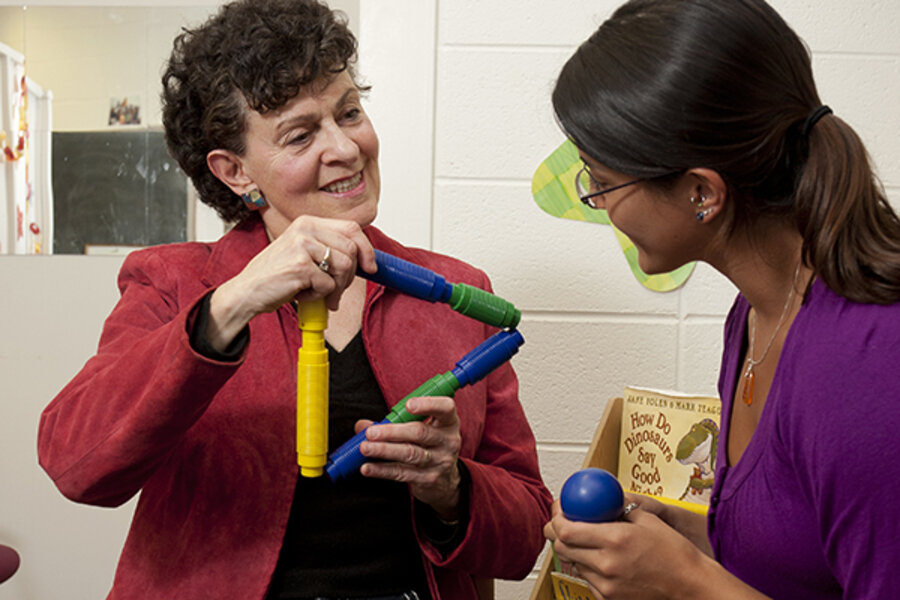Building blocks: High-level learning comes with low-tech toys
Loading...
Toys and childhood are and always will be linked: you can't grow up without toys. They're your distractions, your companions, and – as we're increasingly growing to understand – your teachers.
A recent University of Delaware and Temple University study called "Deconstructing Building Blocks: Preschoolers’ Spatial Assembly Performance Relates to Early Mathematics Skills" digs into how three-year-olds of various socioeconomic levels play with one particular toy (Lego-like building blocks) to explore whether there's a connection between playing with blocks and learning math.
In a nutshell: yes. The report notes that: "Spatial skill independently predicted a significant amount of the variability in concurrent mathematics performance." Kids who were able to build block models that matched a sample model, in short, seemed to possess counting and measurement skills that paid off in terms of ability to count, add, and subtract. The study goes further, convincingly arguing a casual relationship: playing with blocks, in short, builds skills.
The study also found that despite the inexpensive nature of blocks, children from lower socioeconomic status (SES) families miss out on some of their benefits, in part because of a social push toward electronic toys and learning aids:
Blocks may not be a purchasing priority for low SES families when the marketplace is convincing parents that their children need more expensive electronic toys. The fact that low SES children were already worse at the age of 3 is an unfortunate harbinger given the relationship between spatial and mathematics skill. And the fact that these are low income children who are attending Head Start, a service designed to mitigate SES differences in development, only increases the concern for those not enrolled.
And although the study connected blocks with math, language plays a crucial role, too:
Parent reports of the spatial language they used with their child indicated significant differences between higher- and lower-SES participants. Lower-SES parents indicated that they used fewer spatial words, particularly words that convey spatial relationships between two objects (specifically, between, below, above, and near) rather than size (e.g., big or short).
The implications of the study are numerous, but the most bold and obvious finding my be that despite the dizzying expansion of the digital world, "meatspace" toys still matter – that gripping something with your hands and feeling how it interacts with other matter is actually a profoundly powerful way to experience the world and learn from it.
The study also suggests that, as with most things, a disparity of income seems to really matter in terms of how children fare in the world. As the gap between America's haves and have-nots continues to widen, it's worth considering that income inequality has consequences not just for health but also for education.
And for what it is worth: My own experience with wooden blocks was nothing short of fundamental to who I am. From my toddler years up through my early teens, I played with a large set of wooden blocks, building increasingly complex symmetrically balanced cathedrals, cities, and military emplacements. Blocks were the alpha and omega of play for me – entertaining by themselves, but also a perfect setting for incorporating other items (Legos, little green army men) and putting them into a larger unified context. My early math skills seemed to benefit from the experience, and I was on a hot streak until a nasty bout of advanced algebra in high school derailed me. I've been working with words ever since, but even in the world of writing, structure is fundamental. Structure is at the core of playing with blocks, and I'm pleased that my parents hung onto my set; they'll be going to my son sometime very soon ... with Legos to follow as soon as he can avoid swallowing them.






